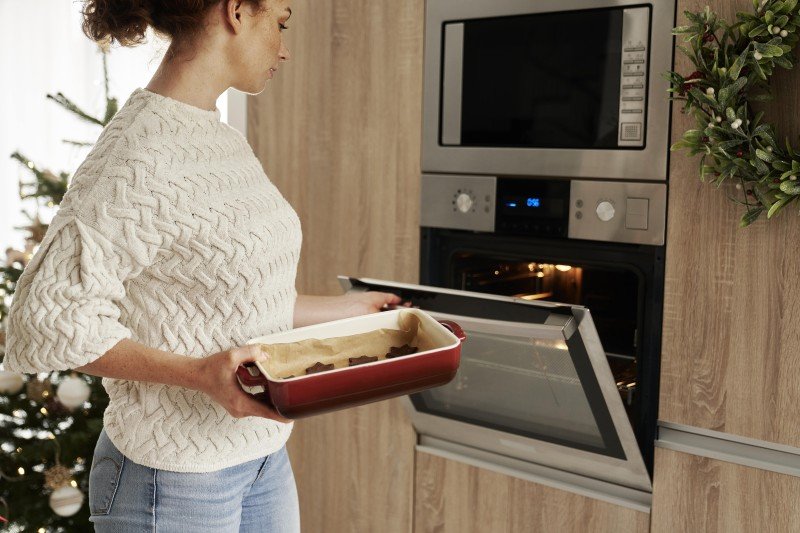5 Laws Anybody Working In Fan Oven For Sale Should Be Aware Of
The Benefits and Advantages of Investing in a Fan Oven: A Comprehensive Guide
Recently, home cooking has actually gotten considerable appeal, leading many to seek out effective, versatile kitchen devices. One such appliance that stands apart is the fan oven, likewise referred to as a convection oven. With the ability to cook food uniformly and effectively, fan ovens are becoming a staple in kitchen areas across the globe. This short article checks out the different benefits of fan ovens, elements to think about when acquiring one, and answers to regularly asked concerns about these ingenious cooking appliances.
What is a Fan Oven?
A fan oven utilizes a fan and an internal exhaust system to circulate hot air around the food. This style permits even heat circulation, which can lead to faster cooking times and improved cooking outcomes. Unlike conventional ovens, which may experience locations, fan ovens guarantee that every part of the food is equally cooked.
Advantages of Fan Ovens
Faster Cooking Times:
- The effective air flow in a fan oven typically decreases cooking times by up to 25%.
- This is specifically beneficial when preparing larger meals or numerous dishes simultaneously.
Energy Efficiency:
- Due to quicker cooking times, fan ovens normally take in less energy than traditional ovens.
- This can lead to reduced electrical power bills and is a more eco-friendly choice.
Versatile Cooking Options:
- Fan ovens can cook a wide variety of meals, from baking cookies to roasting meats.
- They typically include several cooking modes, such as baking, barbecuing, and steaming.
Even Cooking:
- The circulating air gets rid of cold spots, ensuring that food cooks evenly.
- This is particularly helpful for baking, where consistency is key.
Better Browning and Crisping:
- The motion of hot air enables better browning on baked items and crispier textures on roasted foods.
- This can elevate the general discussion and taste of dishes.
Lowered Spillage:
- Many fan ovens include deeper trays and shelves, which help contain spills and splatters.
- This leads to easier clean-up after cooking.
Aspects to Consider When Buying a Fan Oven
When choosing to invest in a fan oven, numerous elements need to be remembered to ensure that it meets your cooking needs and kitchen space.
1. Size and Capacity
It is vital to select a fan oven that fits your kitchen area and caters to your cooking volume. Measure the designated location and think about the oven's internal capacity.
2. Functions and Functions
Look for ovens with features that will improve your cooking experience. Common features might consist of:
- Multiple cooking functions
- Self-cleaning options
- Adjustable fan speeds
3. Energy Rating
Considering the energy effectiveness ranking of the fan oven can help minimize both your energy expenses and environmental effect. Search for designs with high energy scores to optimize savings.
4. Brand Reputation
Researching various brand names will supply insight into which manufacturers regularly produce reputable and top quality fan ovens. Client evaluations and rankings can assist your decision.
5. Price and Warranty
Fan ovens been available in a range of cost ranges. Establish a budget plan that fits your monetary scenario, and inquire about service warranty choices to ensure you receive support in case of problems.
Often Asked Questions (FAQs)
1. How does a fan oven differ from a regular oven?
A fan oven flows air with the help of a fan and exhaust system, permitting even cooking and faster preparation times compared to a traditional oven, which counts on stationary heat.
2. Can I utilize dishes developed for traditional ovens in a fan oven?
Yes, you can adapt traditional recipes for a fan oven by reducing cooking temperature levels (generally by 20 ° C or 36 ° F) and keeping an eye on cooking times, as fan ovens generally prepare food much faster.
3. Are fan ovens more pricey than conventional ovens?
While the initial cost of a fan oven can be greater, the prospective savings in energy expenses and faster cooking times may offset this expense gradually.
4. Do fan ovens need more maintenance than conventional ovens?
Maintenance requirements for fan ovens are comparable to those of conventional ovens. Nevertheless, Internet Page -cleaning function available in many fan oven designs can streamline upkeep.
5. What kinds of food are best suited for cooking in a fan oven?
Fan ovens stand out at cooking a wide array of foods, consisting of:
- Baked items like cookies and cakes
- Roasted meats and vegetables
- Casseroles and gratins
Purchasing a fan oven can elevate the home cooking experience through its effectiveness and adaptability. With its even heat distribution, much faster cooking times, and energy cost savings, it's not surprising that that fan ovens are gaining appeal amongst cooking lovers. When thinking about a purchase, take into account factors such as size, features, and brand name track record to discover the perfect design for your kitchen.
In summary, whether one is a passionate home cook or merely looks for a trustworthy appliance, a fan oven sticks out as an important addition to any kitchen. The balance of speed, quality, and energy performance makes these ovens a smart option for the modern culinary landscape.
- * *
Summary Table: Key Benefits of Fan Ovens
Advantage
Description
Faster Cooking Times
Reduces cooking time by approximately 25%.
Energy Efficiency
Consumes less energy, lower energy bills.
Flexibility
Multiple cooking methods for different dishes.
Even Cooking
Removes cold areas for uniform outcomes.
Much better Browning
Produces crispier textures and boosts taste.
Decreased Spillage
Deep trays help contain food splatter.
- * *
By thinking about the info supplied in this post, individuals can make informed choices about purchasing a fan oven, guaranteeing they take pleasure in scrumptious home-cooked meals for several years to come.
